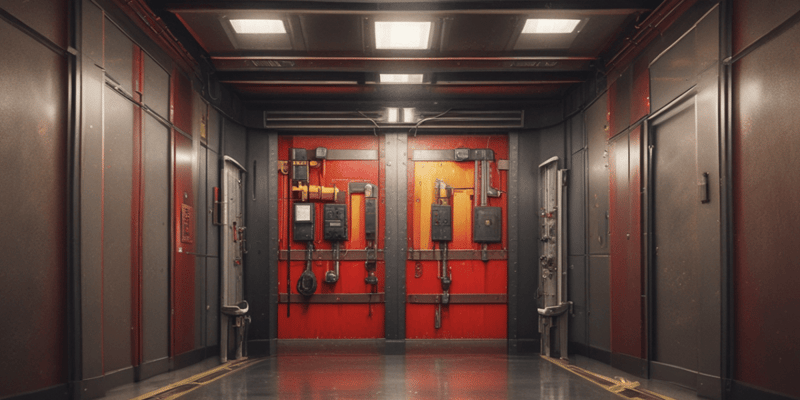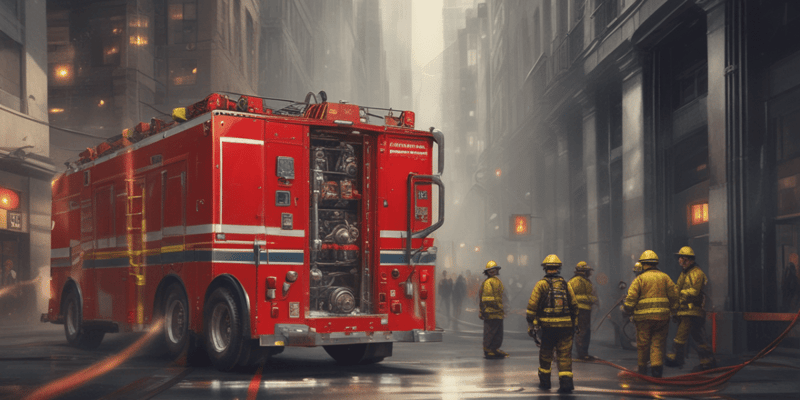Questions and Answers
What potential consequences can occur when an elevator is used during a fire without proper precautions?
Which component is NOT part of the 'Fire Service' feature in elevators?
Where can the Knox box be located in buildings without 24-hour on-site security?
What is required to be contained within the Knox box?
Signup and view all the answers
What action is taken when Fire Service Phase I is activated automatically?
Signup and view all the answers
Which switch position will bypass alarms to return the elevator to normal operation in Fire Service Phase I?
Signup and view all the answers
Which device can automatically activate Fire Service Phase I?
Signup and view all the answers
What should be done after clearing and resetting alarms to restore elevator to normal service?
Signup and view all the answers
Which of the following keys are NOT typically found in the Knox box?
Signup and view all the answers
Which of the following statements about Fire Service Phase I is INCORRECT?
Signup and view all the answers
Study Notes
Elevator Operations at Working Fires
- The use of elevators during a fire can have disastrous consequences if proper precautions are not taken, including malfunctions, opening on the fire floor, and exposing passengers to fire, smoke, and superheated gases.
Fire Service Feature
- The "Fire Service" feature is a required component of elevator codes in public buildings.
- There are three key components of the fire service feature: the Knox box, Phase I Operation, and Phase II Operation.
Knox Box
- Required in buildings without 24-hour on-site security.
- Typically located in the elevator lobby or outside the building.
- Contains the elevator fire service key(s) and may also have access keys to the building interior and elevator mechanical room.
Fire Service Phase I
- Activated by keying the three-position hall station switch or automatically by smoke detectors in elevator lobbies, hoistway, or mechanical room.
- Takes the elevator car(s) out of normal operation and returns them to a predetermined landing, locking them out of service.
- Prevents people from using the elevators during a fire.
- Can be bypassed by keying the switch to "BYPASS", returning the elevator(s) to normal service.
- After alarms are cleared and reset, keying "BYPASS" resets the elevator(s) to normal service.
- Keying "OFF" and removing the key returns the elevator(s) to normal operation.
Studying That Suits You
Use AI to generate personalized quizzes and flashcards to suit your learning preferences.
Description
Learn about the precautions to take when using elevators during a fire, including the Fire Service feature and its components.




